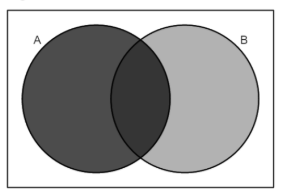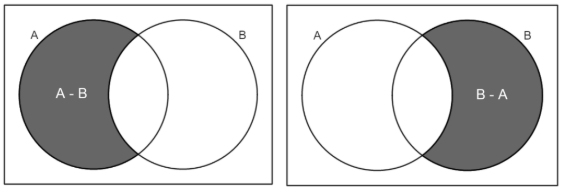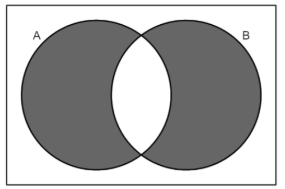(DISC STR 1) Preliminary
1/80
There's no tags or description
Looks like no tags are added yet.
Name | Mastery | Learn | Test | Matching | Spaced |
|---|
No study sessions yet.
81 Terms
Proposition
It is defined as a statement to be proved, explained, or discussed.
Statement
It is a declarative sentence that is either false or true (not both).
Capital letters
When represented in tables, these are usually used for proposition.
T
In letter symbols, we use this to represent a true statement.
F
In letter symbols, we use this to represent a false statement.
1 = true
0 = false
Using numerical symbols, what represents true and false?
Laws of thought
This is the basis of all logic for scholars who saw themselves as carrying on the Aristotelian and Medieval tradition in logic.
Law of Identity or “Logical Identity”
Law of Excluded Middle
Law of Non-Contradiction
These are the bases for propositional logic or based on scholars are the “laws of thought.”
Law of Identity or “Logical Identity”
It is the notion that things must be, of course, identical with themselves.
Law of Identity or “Logical Identity”
Example: “If water is water, then by the law of identity, anything we discover to be water must possess the properties.”
Law of Excluded Middle
It is the idea that every proposition must be either true or false, not both and not neither.
Law of Excluded Middle
Example: “If the date today is January 1, the proposition P is true only; it cannot also be false.”
Law of Non-Contradiction
Logically correct propositions cannot affirm and deny the same thing.
Law of Non-Contradiction
Example: “Is it January 1 today? The answer could only be yes or no and not both.”
Truth Table
It is a chart to keep track of all the possibilities in the proposition.
Compound Proposition
It is a proposition constructed by combining one or more existing propositions.
Negation
Conjunction
Disjunction
Implication
Biconditional
XOR
These are types of logical connectives.
Negation
It combines propositions using the keyword not.
Negation
It states the opposite of the proposition.
Negation
We use the symbol ( ~ ) or ( ¬ ) attached to the representation of the proposition.
Conjunction
It combines propositions using the keyword and.
Conjunction
It would only be true if both initial propositions are true.
Conjunction
The symbol (^) is used to represent this logical connective.
Disjunction
It combines proposition using the keyword or.
Disjunction
It will be true if one of the propositions is true.
Disjunction
The symbol (v) is used to represent this logical connective.
Implication
The combined propositions are formed as if-then statements.
Implication
Thy symbol used to represent this logical connective is an arrow (→).
Antecedent
In Implication: the first proposition is called?
Consequence
In Implication: the second proposition is called?
Converse
Contrapositive
Inverse
These are other implications that can be formed from A → B
Converse
It is the reverse of the implication which means that the second statement is now the antecedent.
B → A
Contrapositive
The propositions are interchanged (become Converse) and negated.
~B → ~A
Inverse
The original propositions are negated.
~A → ~B
Biconditional
A statement combining a conditional statement with its converse.
Biconditional
The words if and only if is used in this proposition.
Biconditional
The symbol used for this logical connective is (→) [arrow na back-to-back].
Biconditional
Both propositions should have the same value.
XOR
Read as exclusive or and is a version of a disjunction that does not allow both propositions to be true simultaneously.
XOR
The symbol used for this logical connective is (⊕) .
XOR
It is often used for bitwise operations, particularly in computer science.
Tautology
It is any statement that is TRUE regardless of the truth values of the constituent parts
Contradiction
It is any statement that is always FALSE regardless of the truth values of the parts.
Contradiction
It is the opposite of a tautology.
Contingency
It is any statement that is neither a tautology or a contradiction.
Logically Equivalent
When two different compound propositions have exactly the same truth value in every case, then the propositions are?
Logical Equivalence
The symbol used to denote this is ≡
Set
It is a well-defined and an unordered collection/aggregate of objects of any kind.
Objects
They are referred to as elements or members of the set.
Roster Method
It is also known as Listing Method.
Roster Method
Example: S = {0, 1, 2, 3, 4, 5, 6, 7, 8, 9}
Descriptive Method
It is also known as Set Builder Method.
Descriptive Method
Example: S = {whole numbers less than 10}
Universal Set
It is the set that contains all elements relevant to a particular discussion or problem.
Finite Set
The number of elements in a set is countable.
Infinite Set
The number of elements in a set is not countable.
Set Equality
It states that the two given sets are identical, if and only if they contain exactly the same elements.
Subset
It is a set contained in a larger set or in an equal set.
Subset
This symbol ⊆ means:
Universal set of all numbers
The symbol U means:
For every
The symbol ∀ means:
Element
The symbol ∈ means:
Proper Subset
It is a subset that is not equal to the set it belongs to.
Proper Subset
This symbol ⊂ means:
2n
The number of subsets of a set with n elements is:
2n - 1
The number of proper subsets of a set with n elements is:
Venn Diagram
It is a way of visually representing sets of items or numbers by using their logical relationships to decide how they should be grouped together.
The Algebra of Sets
It encompasses the fundamental properties of set operations and set relations.
Set Complement
Set Intersection
Set Union
Set Difference
Symmetry Difference
These are the fundamental laws of set algebra:
Set Complement
This symbol (‘or c) means:
Set Intersection
This symbol (∩) means:
Set Union
This symbol (∪) means:
Set Difference
This symbol (-) means:
Symmetric Difference
This symbol (⊕) means:
Set Complement (‘or c)

Set Intersection (∩)

Set Union (∪)

Set Difference (-)

Symmetric Difference (⊕)

Symmetric Difference (⊕)
A set containing all the elements present in either of the sets but not in their intersection.
Symmetric Difference (⊕)
It is the complement of the sets’ intersection.